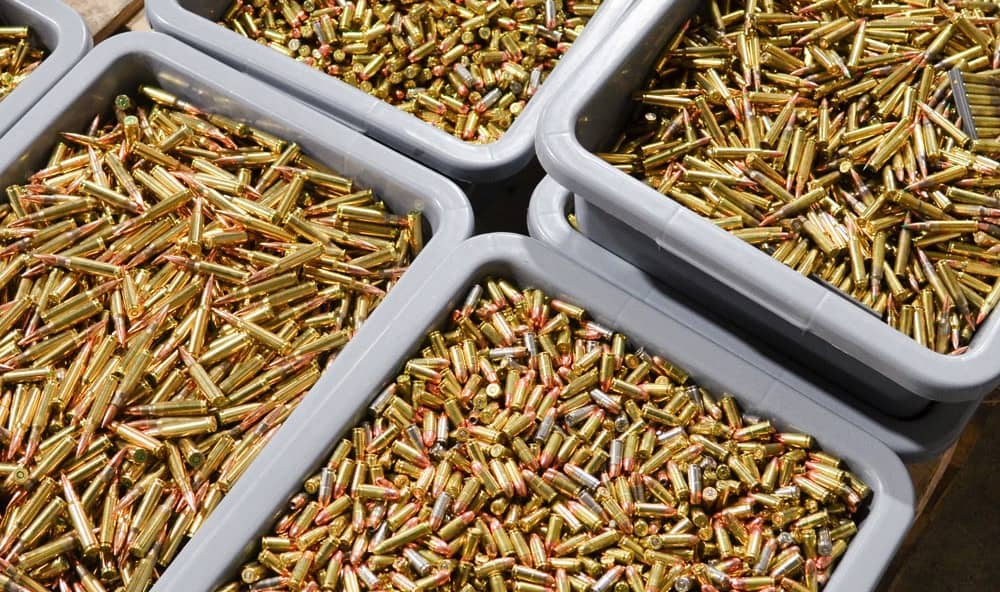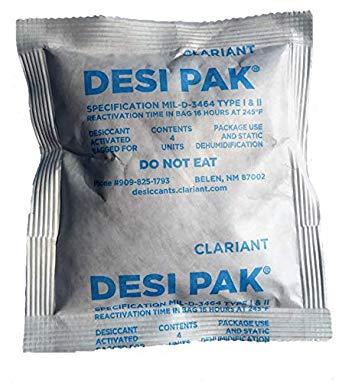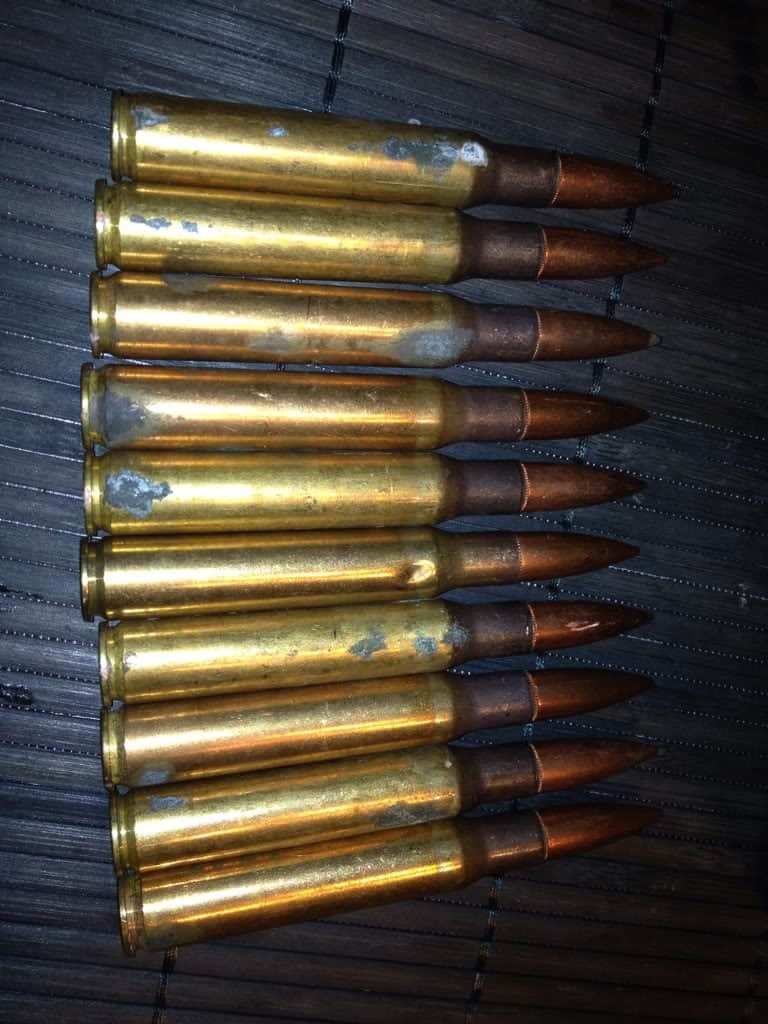If you’re looking to store ammo for an extended period of time you’ll want to make sure you’ve mastered the basics of this practice. It doesn’t matter if you’re doing it for survival prep, stacking up your weapons room, or just want to be ready when SHTF here’s 10 ammo storage tips you can quickly master.

Tip #1 Buy High-Quality Ammunition
The first, and perhaps most seemingly obvious, tip to bring up is to buy high-quality ammunition. If you come across your favorite ammo and find it is suspiciously cheap than what you are used to paying it would be best to ask the store owner or manager first where it came from.
Clearly, if you can see that the product brand itself is not on sale then you might just be buying production rejects that are already ammunitions that perhaps hit the bare minimum of quality requirements to be able to get out of the door in the first place. Yes, this does happen. Keep it in mind!
Also, it’s good to just buy the box that isn’t all beat up. If it had a rough ride already getting to the store without you being able to determine what actually happened then you might find it in your best interest to let it pass you by.
Alternatively, there is ammo that is hermetically sealed. This means that the bullet is specifically sealed to be airtight. You’ll still have to be sure to protect the outside casing of the bullet from exposure to certain elements, which we’ll talk about, but these bullets are the best for long-term storage in general.
Tip #2 Label And Rotate From Oldest To Newest
Get those boxes labeled! If you’re like me, you’re going to have a ton of different ammunition to cover your arsenal of guns. This means you want to have some sort of organization system for the scenario of you needing to actually access the right ammo and do it quickly.
When labeling the type make sure to add the date you bought it as well so if you’re just grabbing ammo to run to the range you grab the oldest ones first and use those up. This process will save you from having to constantly open up each box to find out what it is that you need and if you are in a high-stress situation you also will want to save yourself that time!
Tip #3 Drastic Temperature Changes
As far as temperature is concerned, one hot day or one cold day won’t ruin your ammo. It is more the drastic swings in temperatures if you live in an area that can be over 100 degrees in the summer and into the negatives during the winter.
The cold temperatures don’t necessarily affect ammo negatively, nor does hot weather when less than 150 degrees Fahrenheit. Remember, your car trunk can get this hot when left on hot days so we might suggest to not leave them stored in the trunk. However, the intense fluctuation of temperatures can have an adverse effect on the ammunition and lower the shelf life of your ammunition over the long run.
This is why its best to avoid storing ammunition in a car, a garage, or a shed that’s outside. All these areas are subject to massive temperature fluctuation depending on how the weather is at your location.
Where to store it then? If you have a basement or even another room inside your house where you regulate the temperature to a temperature you’re comfortable with these would be ideal. In case you choose the basement though we’ll cover some things to watch out for with keeping your basement full of ammo.
Another reason the basement is a good location is that it will generally stay within a 10-degree radius of its average temperature without you having to influence it.
Tip #4 Storing In The Basement
The best place to store your ammo is in a cool, dark, and dry location. The basement definitely holds the trophy for cool and dark areas of your home, but the coolness factor is what attracts humidity in.
Also, on a side note – if you are a victim of a flood then the basement is going to be the first place where you’re going to experience the results of the flood. So, just make sure you keep your ammo stored off the ground and you should be able to avoid the feeling of having salt in your wounds with a flooded basement AND ruined ammo.
It’s also a good idea to just make sure your gutters and downspouts are working properly. You don’t want the foundation of your house that becomes your basement to be leaking or taking in water in ways that it shouldn’t be whether you have ammunition down there or not.
Tip #5 Wet Ammo
If you end up in a situation where your ammo has gotten wet and you notice that there’s rust on it, you can sand it off if it just started. If the rust is left to fester than your ammo will be ruined over the course of several years and obviously won’t even be able to fire anymore. Not that you would want to put it inside of your gun anyways.
If you do choose to sand off slightly rusted ammo just know that even this slight abrasion can alter the shape of the bullet which can ruin the accuracy of the shot. From a safety standpoint, it’s best to discard any ammunition that has been exposed to rust at all.

Tip #6 Handle That Moisture
Regardless of how well you position your ammunition within your storage locations that are available there is always going to be moisture in the air. One way to completely avoid moisture coming in contact with the ammo at all is to use a vacuum sealer. This will remove virtually any chance of it becoming rusty or degraded through moisture contact.
If you choose a different route, there are many other options! First, you can buy silica gel or clay desiccant packages. Essentially these desiccant packs will absorb the moisture out of the air.
A lot of them are even reversible so you just buy them once and when they are full of moisture you can put them in a dry area and they’ll let all the moisture out and voila! You can use them again!

Some of the silica gel packs are even color-coded to signify when they are ready to come out and be switched to a dry environment. They come with instructions where you can dry them out in your oven so that you don’t have to wait for them to just dry out naturally.
It’s a nice little one-time investment for a whole range of equipment and products that you want to keep dry – not just ammo!
If you want something that’s less expensive than the desiccant packages you can always make one at home by yourself. Just a simple combination of uncooked rice and salt into a permeable bag is all you need. The uncooked rice is a natural absorbent and will absorb the moisture out of the air and the salt will help keep the rice preserved so that it doesn’t go bad.
Tip #7 Check For Corrosion
It’s a good idea to stay on top of your ammo by checking them for corrosion. You should set up a schedule to at least check them once a month but not more often than that. If you have a good system for keeping moisture out of the ammo boxes then you can bump it up to every few months.
Basically, you are looking for the beginning of rust and other discolorations on the metal casing of the bullet that implies that it’s beginning to deteriorate and degrade. If you find any bullets in this manner then make sure to discard of them safely.

Tip #8 Using The Right Container
There are rubber gasket military surplus ammo cans that you can use to store your ammo. The rubber seal is meant to keep the moisture sealed out of the container so that the inside air doesn’t come in contact with the outside air. If you put a little grease on the rubber seal it will help the ammo can seal better, too!
Even with these, it’s good to keep them in clear plastic bagging simply because you do want to open them every so often to be able to take a look at them and the less they are exposed, the better of you will be.
It is also worth noting that some people don’t actually trust these because military surplus items are used and can cause the rubber seal to be weak.
Tip #9 Using A Dehumidifier
Some people like to go the extra step and get a dehumidifier for the room they are storing the ammunition in. Essentially this will suck the moisture out of the room so that the air remains arid which is the prime condition you are looking for with your bullets.
With all the other tools a dehumidifier certainly isn’t necessary but it’s worth mentioning in case you already have one and maybe you don’t have anything else. I would say that a dehumidifier is a good addition to all the other steps but not simply the one that you can do on its own and expect the best results.
Tip #10 Reloading Your Own Ammo
This idea is simply getting you around the idea of storing your ammo at all. Storing takes space and sometimes we need our space for other stuff! If you’re an avid shooter and you’re not saving a stash of ammo for the end of days, then this might be the way to go.
Make sure you don’t cut yourself short or go on the cheap side of things for the equipment you need. Also, it would be wise to brush up on the history and design of the bullet. The more you understand how a bullet works and where it came from the more you’re going to be able to handle it properly and with respect.
One other thing to note with reloading your ammo is that you can recover the shells if you happen to be someone who had their ammo ruined in a flood. If you get the equipment to reload your ammo, which is always a good investment in the long run, and the ammo isn’t corroded then you’re good to go.
Just start pulling all the ammo and get them emptied out so you can reload them with fresh powder and fresh bullets. Some shooters would even say if you pull apart the ammo and it’s still dry inside then you can still shoot the rest of the batch and it should be fine. This would be at your own discretion though.
The safest option is to simply pull them all and then reload them!
In Conclusion
So, if you keep them vacuum-sealed within military surplus ammo can and with a dehumidifier pumping away in a temperature regulated environment then you can expect a shelf life of your ammunition to be at a minimum of a few decades.
Alternatively, you can use the plastic bagging with the clay or silica desiccant in your ammo cans to keep them dry and a dehumidifier wouldn’t hurt here either. Just make sure you keep them cool, dry, and dark! That’s it!
Keep in mind that heavy temperature fluctuation is what’s going to damage your ammo more in the long run. One single hot day or cold day isn’t reason enough to throw your ammo out.
It also takes very very high temperatures for ammo to ignite and “pop off” or fire off so you don’t have to worry about that happening in your car but it is a good idea to keep them out of the truck on a hot day just cause it can get way hotter than the average outdoor temperatures and that can damage your ammo.
Other than that you will be good to go! Enjoy your long-life ammo for decades to come and keep those targets lit up! Stay safe!
If you enjoyed this article you’ll probably like these:


